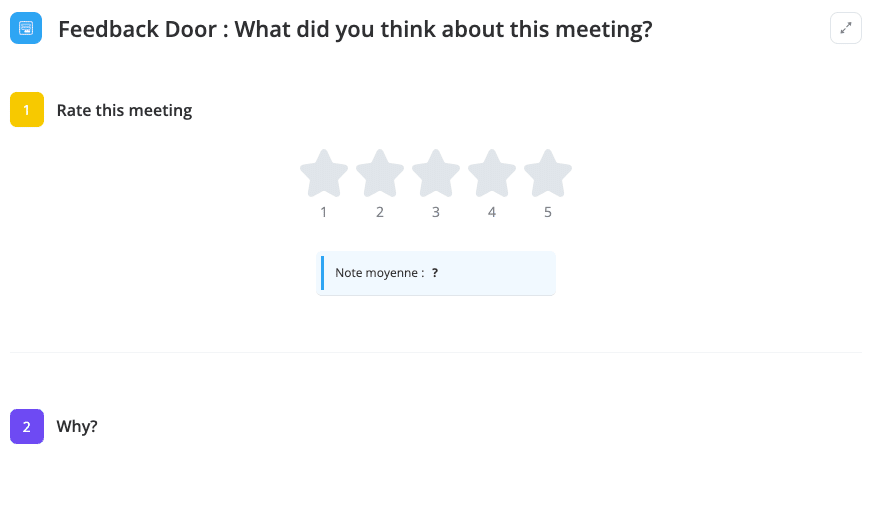Feedback, also referred to as social learning is a means of learning about yourself (or your work) from the community. It’s a communication regulation process that enables the person giving a message to find out if the person receiving it has understood it properly. Whether conflict management, feedback or results analysis, it improves individual and collective effectiveness, depending on the context.
What does this approach consist of?
In companies, there are several methods to assess yourself and get to know yourself better. Introspection, self-observation or taking a step back from your actions. However, employees sometimes need a neutral, objective and external view to take a step back. To do so, this method of feedback is relevant.
To be optimised and effective, this approach must be focused on what the person does and not on what they are. It’s a factual description of an action, a behaviour or a result but in no way a value judgement.
Performed well, it enables everyone to make progress and consolidate their knowledge and their skills. Feedback culture appears essential to provide and receive quality management. There are several types de feedback: corrective, incentivising or remedial. In general, feedback helps you become aware of your actions to put in place continuous improvement strategies.
We can see that it’s an important exercise that is used regularly in company annual appraisals. The manager gives their feedback on the employee’s performance and results. The employees does so on their work relations and the targets they are given. This helps them communicate better, adapt to blocking points and analyse their successes.
Why request feedback?
Receiving negative (or positive) feedback appears to be a powerful method to improve your skills, challenge your vision and ego and take a step back from the image you give out.
Used in a meeting, it provides certain additional information. Furthermore, it limits misunderstandings and promotes collective intelligence.
An integral part of company culture, it’s essential in order to develop a team.
With an external, neutral vision, you can modify your behaviour to improve:
- either by maintaining or strengthening your actions
- or by modifying or correcting them
What are the advantages of good feedback?
For the receiver
- gaining a better understanding of the impacts of your actions on others and your organisation,
- feeling considered and recognised in your company (because time is given),
- giving yourself the possibility to make progress,
- adapting better to the expectations of your group.
For the giver
- giving effective feedback enables them to show the interest they have in the person they are giving it to,
- maintaining a quality relationship and ease of communication; promoting interaction,
- asking additional questions, suggesting other areas for reflection,
- taking decisions quickly on sensitive topics that could have negative impacts in the long term
Why use it in a company?
In general, for a manager in a company, giving feedback is essential. It helps optimise individual and collective performance and ensure that information, targets and the company vision have been properly understood.
It’s also a real tool to maintain good-hearted, quality communication between a company’s employees. When it’s constructive, it appears to be an effective asset for developing a team’s performance.
How do you give and receive quality feedback?
To request and obtain relevant feedback, you need to use a certain methodology. In general, there are three key stages to put in place.
- Explain your approach: why are you asking for feedback? Is it a need for progress or to find out your strengths and areas for improvement? To obtain better results, allow the participant(s) time to answer and think about a truly relevant response.
- Frame it with clear questions: “What did you mainly appreciate? What were the strengths? What are your suggestions for improvement?”. You must guide the participants with targeted questions.
- Welcome the feedback, whether it’s positive or negative:
If it’s positive: don’t challenge compliments or belittle your merit. Instead, thank the person for the sincerity of their feedback and take stock of what you’re learning about your skills.
If it’s negative: don’t be defensive and don’t feel ill at ease. Don’t interpret it as a failure but think about your areas for improvement. Be careful, some feedback may be clumsy so try to put it in perspective.
Some tools are useful in obtaining rapid constructive feedback after a meeting. The Beekast collaborative platform offers you the possibility to use activity templates to obtain feedback from your employees. Don’t hesitate to discover the “Feedback Door” inspiration template. It allows you to assess the quality of a meeting’s results and to obtain qualitative feedback to improve future sessions.


